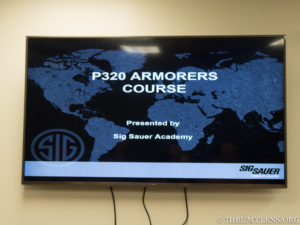 At this point in my life, I’ve developed a pretty impressive training resume with advanced training courses in pistol, rifle, shotgun, knife, and even hand to hand techniques. But what I didn’t have was any sort of training in how properly maintain, diagnose problems, and effect minor repairs in my firearms – an Armorer’s class. It was something I’ve wanted to try and do several years, but there are obstacles. If you’re Joe Civilian, it can be hard to find an Armorer’s course that will take you – many are military or law enforcement personnel only. The other obstacle (at least for myself) is simply having the guts to do it. The idea of disassembling a gun and putting it back together is intimidating to many – I’m not really what you’d call a “hands on” guy to begin with, so this was particularly true in my case. I had nightmarish visions of an instructor dumping a box of small parts and springs on my work station and saying “you have to assemble a working gun out of this to get your certification…timer starts NOW!” Still, I did have a desire to better understand the inner workings of my pistol. So when I noticed that the SIG Sauer Academy was holding a P320 Armorer’s Course open to civilians just an hour and a half from where I live, I decided I finally take the leap. Having just taken a week of training at the SIG Sauer Academy in Epping, NH the timing was perfect me – when you complete a course at the Academy and sign up for another within 30 days, you receive a 10% discount. So I really had no excuses as to why I shouldn’t take a day off of work and attend this eight hour class.
At this point in my life, I’ve developed a pretty impressive training resume with advanced training courses in pistol, rifle, shotgun, knife, and even hand to hand techniques. But what I didn’t have was any sort of training in how properly maintain, diagnose problems, and effect minor repairs in my firearms – an Armorer’s class. It was something I’ve wanted to try and do several years, but there are obstacles. If you’re Joe Civilian, it can be hard to find an Armorer’s course that will take you – many are military or law enforcement personnel only. The other obstacle (at least for myself) is simply having the guts to do it. The idea of disassembling a gun and putting it back together is intimidating to many – I’m not really what you’d call a “hands on” guy to begin with, so this was particularly true in my case. I had nightmarish visions of an instructor dumping a box of small parts and springs on my work station and saying “you have to assemble a working gun out of this to get your certification…timer starts NOW!” Still, I did have a desire to better understand the inner workings of my pistol. So when I noticed that the SIG Sauer Academy was holding a P320 Armorer’s Course open to civilians just an hour and a half from where I live, I decided I finally take the leap. Having just taken a week of training at the SIG Sauer Academy in Epping, NH the timing was perfect me – when you complete a course at the Academy and sign up for another within 30 days, you receive a 10% discount. So I really had no excuses as to why I shouldn’t take a day off of work and attend this eight hour class.
While most SIG Sauer Academy classes take place at the Academy in Epping, NH, many are taught at remote locations. For remote classes, SIG typically partners with a retail firearms seller who has classroom facilities to host the class. The class I took was hosted by Vance Outdoors in Obertz, OH:
With the location being less than a mile off the highway, and having a Subway sandwich shop about 2 blocks away, the location was ideal, and their classroom facilities were quite nice. Having a large retail operation in the building for browsing also gave you something interesting to do on breaks.
The class was taught by SIG Sauer Academy Instructor Dennis Carroll. The Academy has done a fantastic job of hiring instructors who are not only subject matter experts, but also have great platform skills. Dennis was a patient instructor (believe me when I say his patience was tested in this class…by me…) who really made what could have been very dry material very interesting and engaging. I could not have asked for a better instructor.
In terms of materials we were provided with, each student had the following waiting for them at their work station:
The gun each student worked on was a P320 Compact (which coincidentally enough is the model I own) but with the exception of the recoil spring in the full-size P320, all P320 variations are mechanically identical. I expected to find a whole box of tools we’d need to work on the guns, but as it turns out the P320 requires very little in the way of tools. A mallet, a punch, and a little “T-Pin” (not really an “Armorer’s tool per se…they can be found in office supply stores) were all that were really required, however on more than one occasion during the class I found myself REALLY wanting a pair of needle nose tweezers while working with some of the springs and smaller parts. Each student was also provided with an official P320 Armorer’s Manual which, unlike the rest of the tools, was theirs to keep:
Once the class began, Dennis jumped right in with an overview of the course, the P320, and having each student introduce themselves. Despite this being a “Civilian friendly” class, it was overwhelming attended by members of the Law Enforcement community, with students coming as far as KY and MI to attend. We then jumped into proper maintenance of the P320 and I found the discussion particularly of interest. If you’re like me, you’ve probably watched YouTube videos on how to clean a gun or seen gun forum recommendations of what kind and how much lubrication to apply. But in many cases, these are less than expert sources of information that’s critical to the functioning of a firearm. Hearing not only what the factory recommends, but also Dennis’ personal experience in this area was invaluable. Dennis confirmed several things for me, but also dispelled certain notions as well. Here is a photo of some of the cleaning a lubrication products which were discussed:
After disassembling and then reassembling a magazine and discussing proper cleaning and lubrication of the firearm, we jumped right into tearing down the gun, starting first with the slide. The only thing you can really do in the slide is remove the extractor pin/spring assembly and the striker assembly which we did. We completely disassembled the striker assembly:
After a break for lunch we started on removing the frame from the grip module and completely disassembled it:
I found the striker assembly and frame work to be the most challenging and I’m not going to lie – there are a couple of parts and springs that are frustrating enough to make a preacher swear to get them back where they belong. But eventually (and with a little help) I got it all back together:
Function checking the gun confirmed everything was assembled properly – I was pretty proud of myself as this was stepping quite far out of my normal comfort zone.
At the conclusion of the course, I received certificate of completion which confirms that I’m an official Certified SIG P320 Armorer:
The certification is good for three years, during which time I can perform basic armorer level maintenance and repair of a SIG P320 .and the SIG factory warranty on that firearm will remain intact.
While I’m not ready to go to work in a gun shop or hang an “armorer” shingle out for business, I do have a much greater insight into the P320’s operation. I’m much better prepared to diagnose problems, and prevent problems from occurring in the first place – and that should make me a better shooter.
My hats off to SIG Sauer for making Armorer classes available to Civilians. This speaks highly to SIG’s commitment to their Civilian customers – not every gun manufacturer out there offers Civilian armorer training. But the fact that SIG does certainly increases my brand loyalty to SIG, and makes want to buy more guns from them. Now that I’ve taken my first class and gained a little confidence, next year I’d like to take either SIG’s M16/M4/AR15 Armorer course or perhaps one for my newly acquired SIG MCX. If you ever have the opportunity, do take an Armorer’s course – especially one offered by SIG.



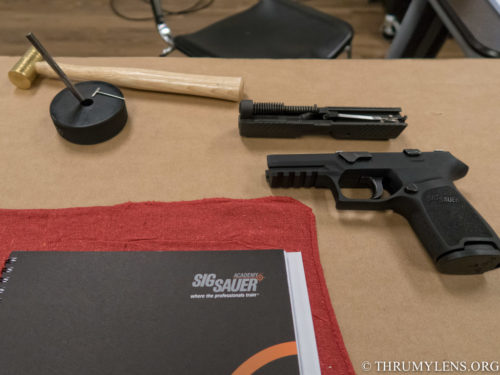
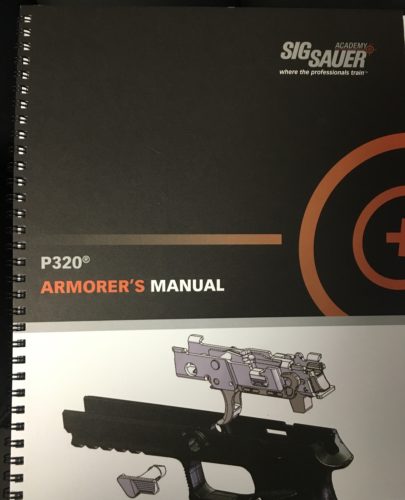
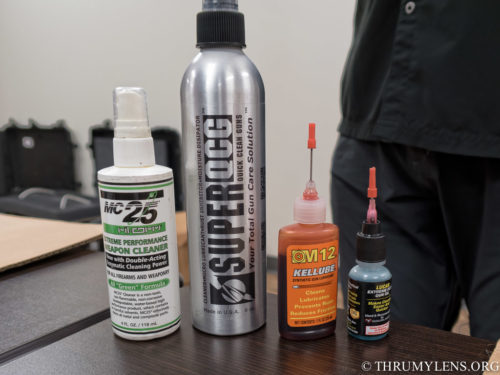
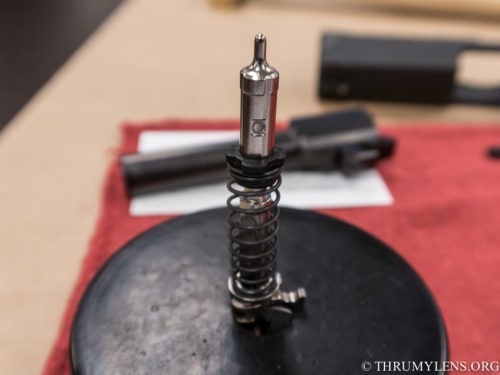
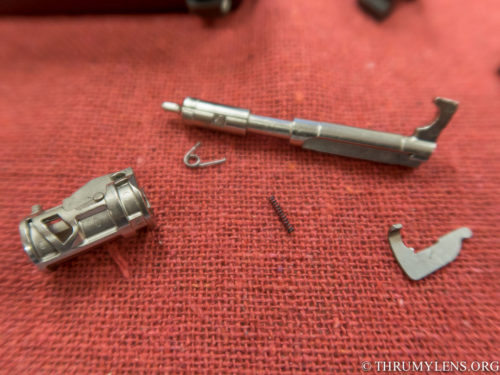
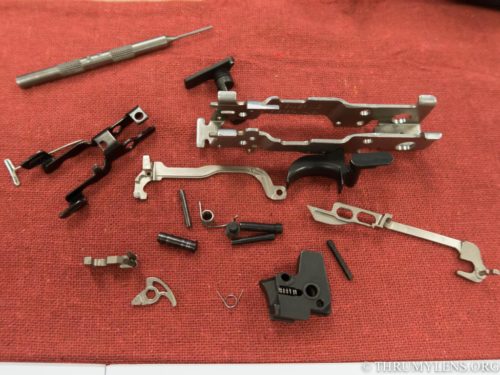

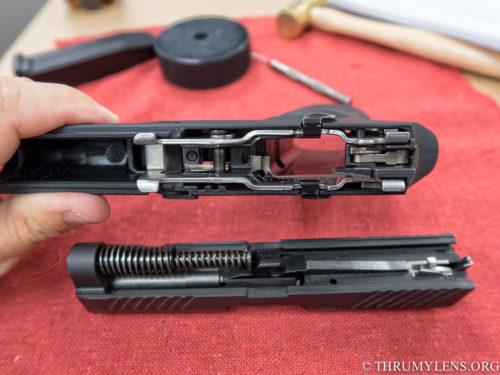
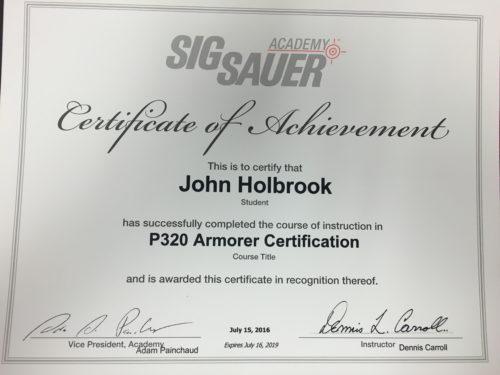
0 Comments
Trackbacks/Pingbacks